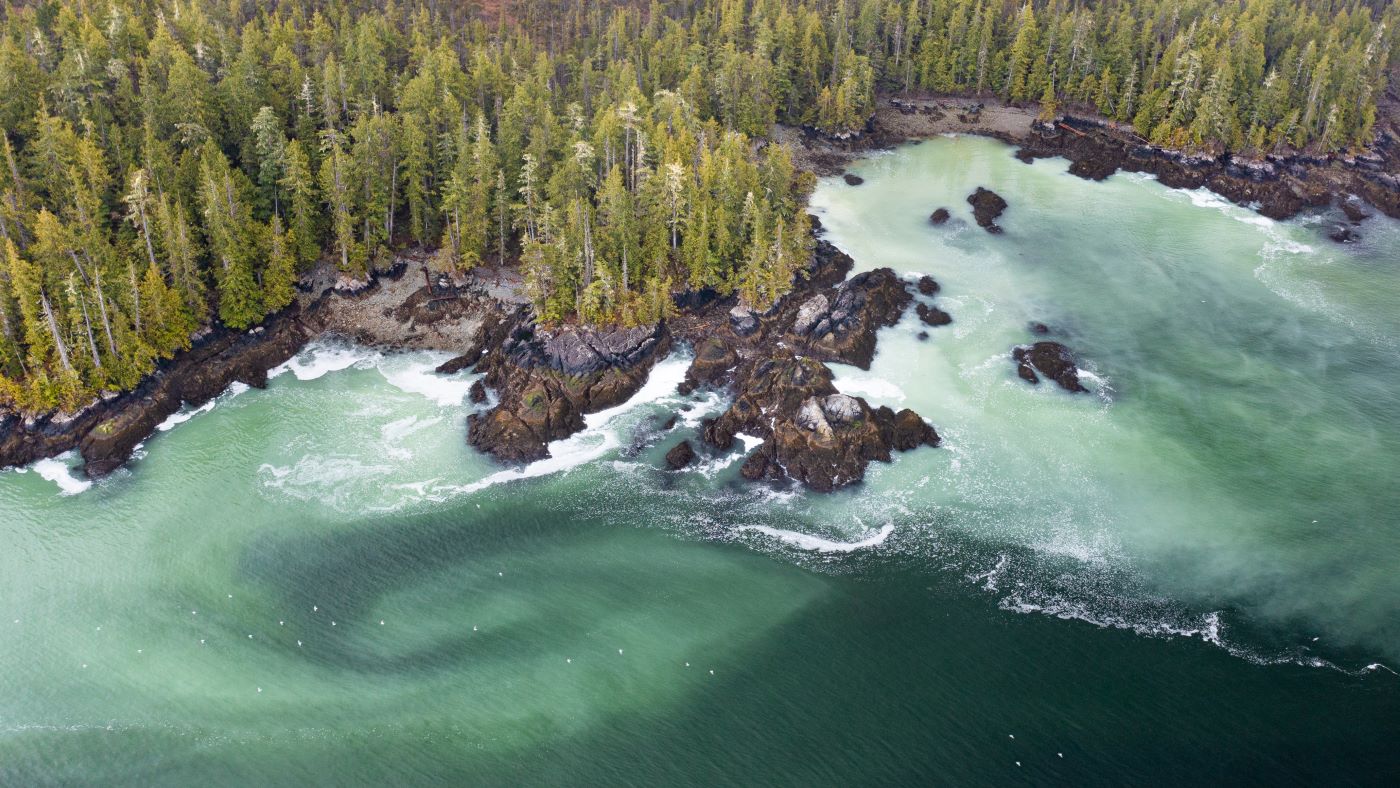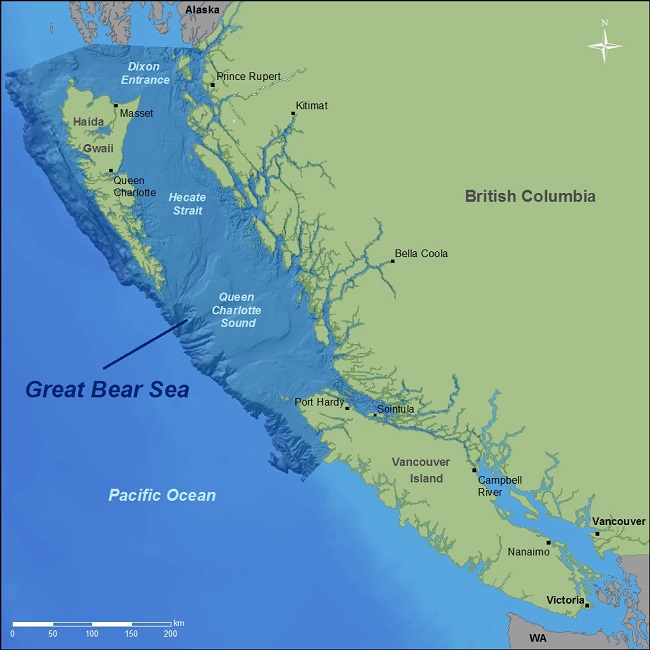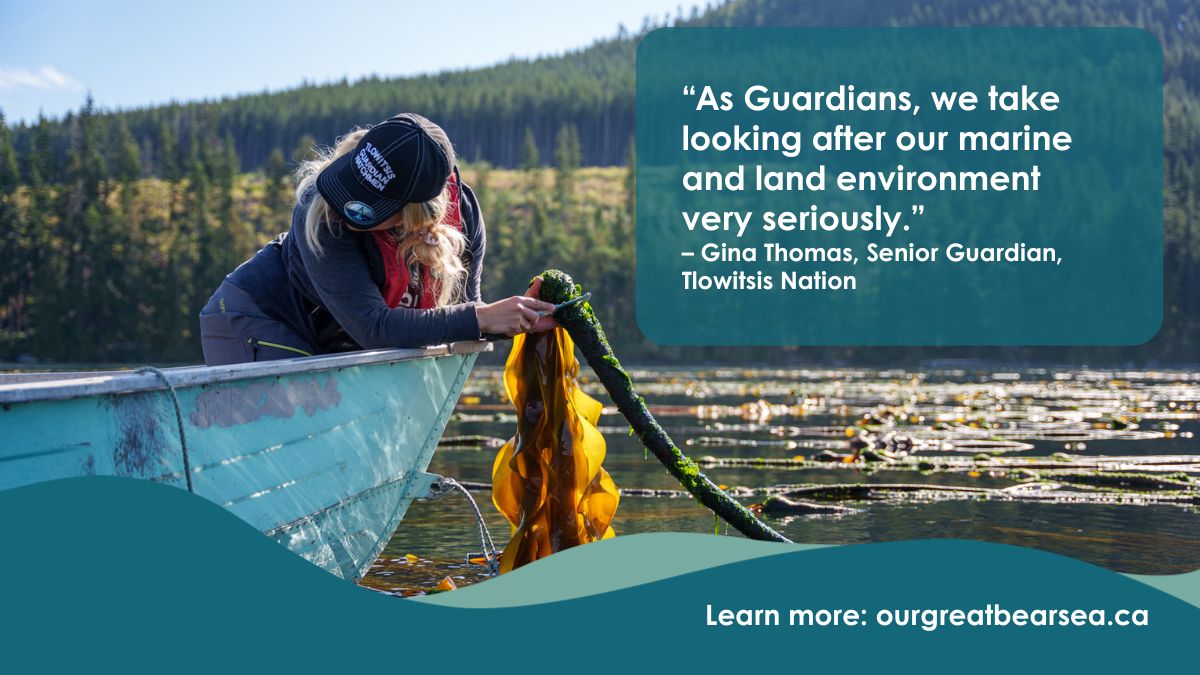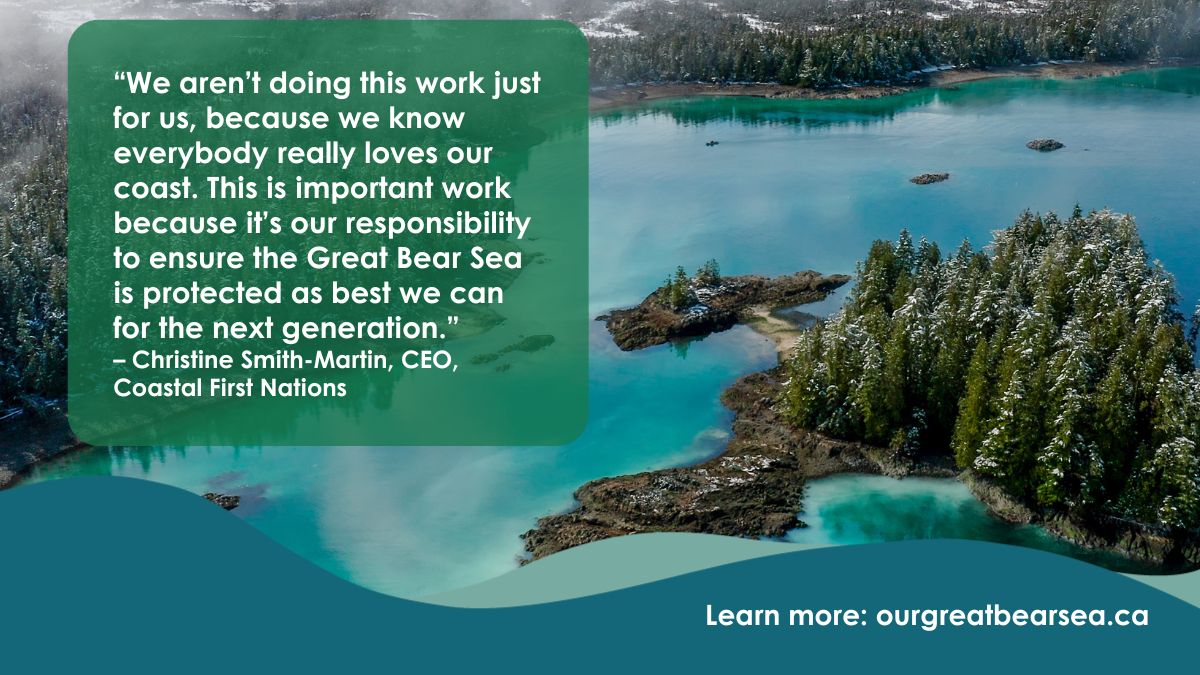
Last week, a tremendous step was taken to secure the long-term health of a large swath of ocean along the BC coast and contribute to economic prosperity in coastal communities. This occasion was decades in the making, and a culmination of the hard work and dedication of many people – in particular Indigenous nations up and down the coast.
On June 25, 2024, 17 First Nations, the Province of British Columbia and the federal government held a press conference on the territory of the Musqueam, Squamish and Tsleil-Waututh Nations, announcing a monumental agreement to fund long-term conservation in the Great Bear Sea region.
Together, the Province, Canada and philanthropic partners have committed to providing $335 million to support Indigenous-led marine conservation in the Central Coast and North Coast, Haida Gwaii and Northern Vancouver Island. This funding is expected to amount to $750 million over 20 years, due to a financing model that leverages additional philanthropic funding.
It follows the commitment Canada made in December 2022 at the UN Biodiversity Conference in Montreal (COP15), to provide up to $800 million to four Indigenous-led PFP projects across the country. Canada has now allocated $200 million of that commitment to the Great Bear Sea, along with $60 million from British Columbia and $75 million from philanthropic partners.

Map courtesy of Living Oceans
What is Project Finance for Permanence? A technical name for an exciting concept
“Project Finance for Permanence” (or “PFP”) is an innovative funding model first used in the Great Bear Rainforest in 2006. It brings together Crown governments, philanthropists and Indigenous Nations, to plan for the appropriate funding to ensure that conservation plans can actually be implemented for the long term. PFPs fund stewardship, monitoring and enforcement by Indigenous Guardian programs, including in marine protected areas (MPAs).
The model has been wildly successful in the Great Bear Rainforest, where conservation financing has supported the protection of the region’s unique rainforest ecosystems while providing a range of economic benefits for local communities. Between 2008 and 2022, First Nations in the region have created 1,253 permanent jobs; launched, acquired and expanded 123 businesses; and established 18 regional monitoring and Guardian Watchmen programs.
The PFP model has been replicated around the world, with five more PFPs having been signed internationally since 2006 (in addition to the Great Bear Sea PFP). There are currently nine more PFPs being negotiated around the world, including three more in Canada.
What does this mean for the Great Bear Sea?
The Great Bear Sea is a remarkable cold-water ecosystem, home to an astonishing variety of wildlife – including humpback whales, orcas and salmon. It faces threats from human activities like shipping, overfishing and development, and – of course – the impacts of climate change.
Coastal First Nations, British Columbia and Canada are planning a network of MPAs in the Great Bear Sea, which will implement the governing Indigenous nations’ values, provide economic opportunities, increase biodiversity and mitigate against the impacts of climate change. We have written previously about the myriad benefits that MPAs can provide, including leading to increasing numbers of fish and larger fish, protecting “blue carbon” sources, supporting human well-being and promoting food security.
This newly-announced Great Bear Sea PFP is crucial for the long-term success of the incredibly important Great Bear Sea MPA network – as even the best laid plans can only get so far without secure funding. The PFP ensures that these areas are more than just lines on a map.
The Great Bear Sea MPA Network’s action plan was endorsed in 2023, and the new MPAs that will form part of the network are at various stages of development. The first new MPA in the network, the Central Coast National Marine Conservation Area Reserve, is currently at the end of a feasibility assessment, which will determine whether it moves on to an establishment agreement phase. The first new marine refuge in the network, the Gwaxdlala/Nalaxdlala (Lull/Hoeya) marine refuge, was established in February 2023 by the federal government, following its declaration as an Indigenous Protected and Conserved Area (IPCA) by the Mamalilikulla First Nation in 2021.
The Great Bear Sea PFP funds will be managed by Coast Funds, the conservation finance organization created through the Great Bear Rainforest agreements process. Coast Funds expects the Great Bear Sea PFP will support more than 3,000 jobs and 200 new businesses.
Though marine conservation is facing many challenges, this announcement is a bright spot. It demonstrates what can be achieved when diverse groups come together, negotiate in good faith, think creatively, and – put simply – work hard toward a goal. Though it marks the end of a long planning process, it also initiates a new era of marine conservation in this extraordinary part of the world.
Top photo: Herring spawn along a rugged coastline / Markus Thompson


